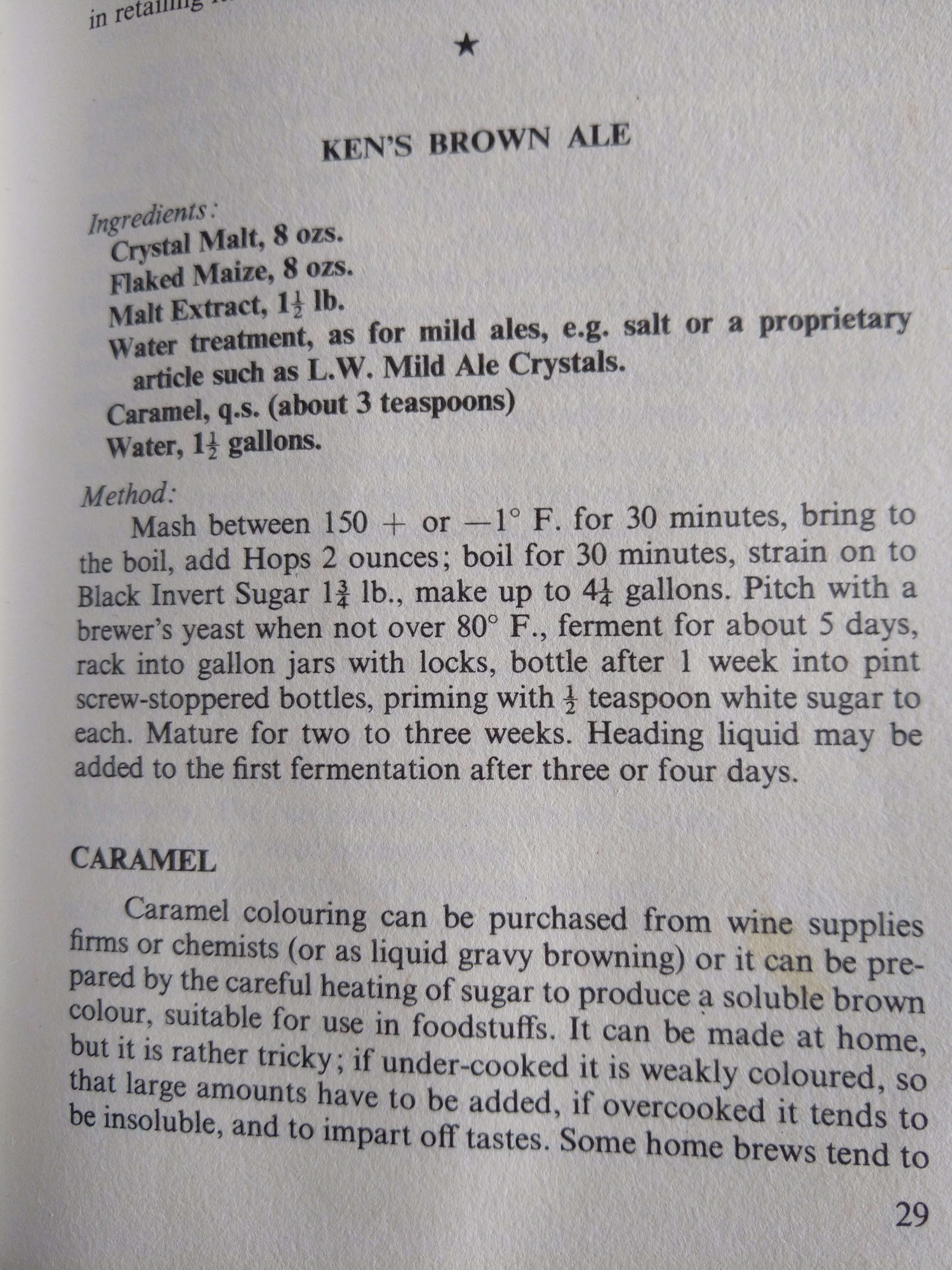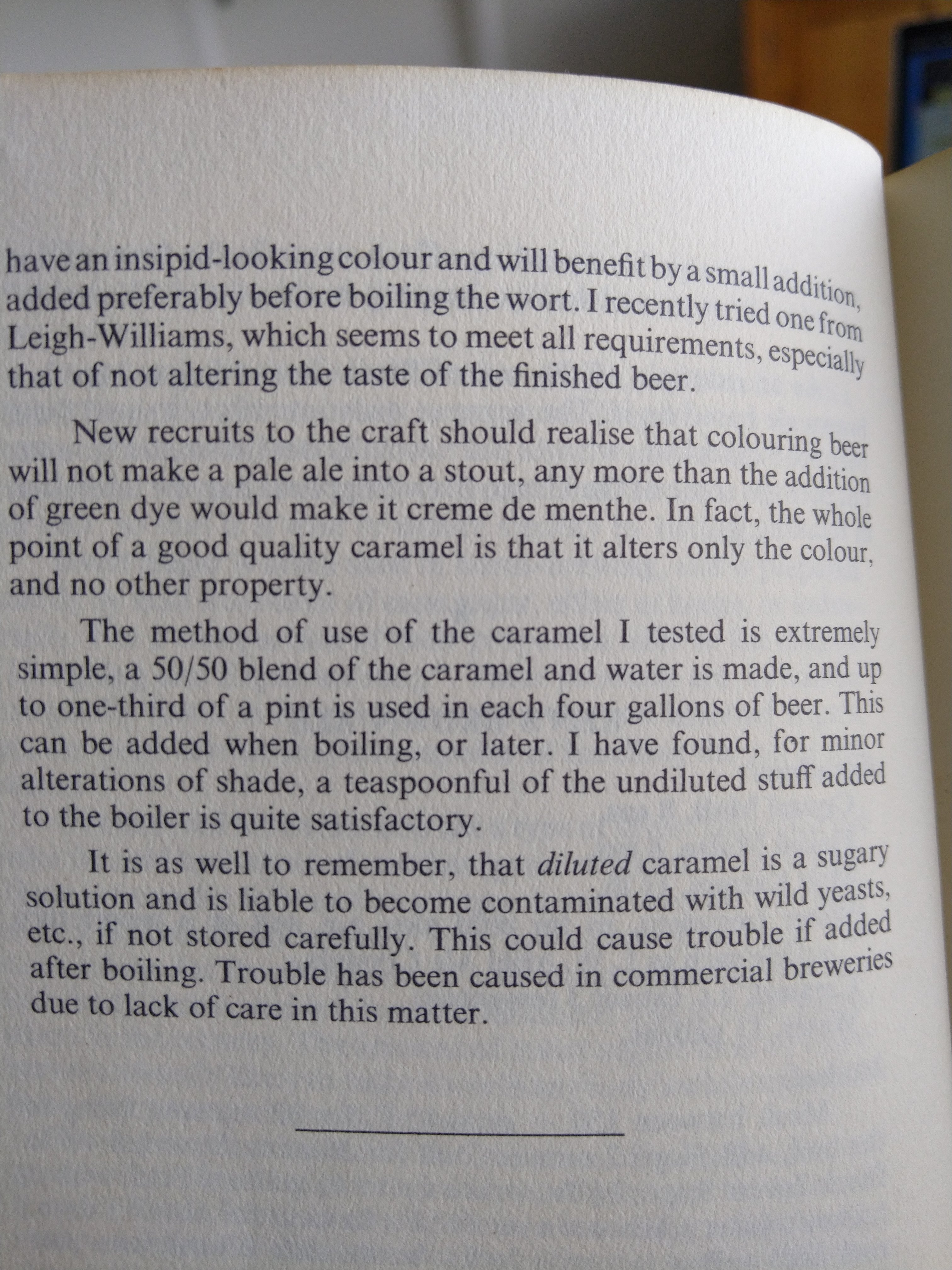schmurf
Well-Known Member
I've been using the one from brouwland and I can't say I've noticed any flavour contribution from it.

The Germans also say it doesn't really leave a taste. Anyway, let us know what you think!I guess I will have to try it out then
So usual YMMV caveats apply but I've never really noticed a perceptible difference between floor malted and non-floor malted English malts, though the depth of my experience is limited to Warminster Maris Otter.I am about to order a new 25kg sack of basemalt, and thought to try Golden Promise instead of Maris Otter.
Looked around a little and my choices are either Simpsons or Fawcett, Fawcett are ~ 160 SEK(~16 Euro) more expensive but you know, floor malted.
Are the extra bucks for floor malted worth it since I brew mostly English styles where the malt character noticed more? The Fawcett is not THAT much more expensive so if it is a significant increase in quality/flavour it is IMO worth the little extra money, anyone who has any experience using Fawcett who could chime in?
![Craft A Brew - Safale S-04 Dry Yeast - Fermentis - English Ale Dry Yeast - For English and American Ales and Hard Apple Ciders - Ingredients for Home Brewing - Beer Making Supplies - [1 Pack]](https://m.media-amazon.com/images/I/41fVGNh6JfL._SL500_.jpg)











Can't speak to Fawcett's GP, but I'm very much enjoying my sack of Simpson's. Clean, bready, slightly sweet. I find MO to be much more agressive in its flavor, very nutty. Simpson's Best Pale Ale is also very nice. More dry malty than GP, but none of MO's nuts.I am about to order a new 25kg sack of basemalt, and thought to try Golden Promise instead of Maris Otter.
Looked around a little and my choices are either Simpsons or Fawcett, Fawcett are ~ 160 SEK(~16 Euro) more expensive but you know, floor malted.
Are the extra bucks for floor malted worth it since I brew mostly English styles where the malt character noticed more? The Fawcett is not THAT much more expensive so if it is a significant increase in quality/flavour it is IMO worth the little extra money, anyone who has any experience using Fawcett who could chime in?
Used both and never noticed a difference.FWIW, I believe Timothy Taylor uses SimpsonsI am about to order a new 25kg sack of basemalt, and thought to try Golden Promise instead of Maris Otter.
Looked around a little and my choices are either Simpsons or Fawcett, Fawcett are ~ 160 SEK(~16 Euro) more expensive but you know, floor malted.
Are the extra bucks for floor malted worth it since I brew mostly English styles where the malt character noticed more? The Fawcett is not THAT much more expensive so if it is a significant increase in quality/flavour it is IMO worth the little extra money, anyone who has any experience using Fawcett who could chime in?
I think that's probably correct. My current house yeast is a mix of verdant and Nottingham. Ferments fast, drops like a stone, good attenuation and the verdant brings in some flavour. Nottingham controls verdants excessive fruitiness so for me best combination so far.I oredered some yeast aswell, still going on my quest to find a 2 yeast blend I am happy with as my "house yeast" intended for Brittish ales (wich I almost exclusively brew).
So my coming tests will be MJ Liberty /Lallemand Verdant, first up a brown ale with 5/4% Amber/Brown malt, 6% Medium crystal and about 7% Demerara as an invert 2 approximation. 1.045 OG.
I know @Miraculix has used both, what were your experiences regarding attenuation?
I suppose a 67c mash should land me about low to mid 70's in AA for darker beers with a bit of darker malts and some sugar, and 65c should be good for Bitters/Pales that I prefer on the drier side, uptowards 80% AA, correct?
Hmmm... I don't know. It's this type of fruitiness that wlp 002 can also deliver when fermented at the upper end of its range. I don't know how to describe it otherwise.Does the Verdant give you apricot? That's what I was hoping to get since I usually pick up a little apricot backgrounds flavour in TT's ales. And if this blends gives me something in the same vein as their brewey strain I think bob's my uncle.
I get apricot/nectarine from Verdant, it's my go-to for US style IPAs though I've not tried it in a Brit.Does the Verdant give you apricot? That's what I was hoping to get since I usually pick up a little apricot backgrounds flavour in TT's ales. And if this blends gives me something in the same vein as their brewey strain I think bob's my uncle.
And an extra plus is that 04 is the best dry yeast I've ever used in terms of flocculation which should compensate for London esbs rather poor flocculation. I like London esbs flavour...I get apricot/nectarine from Verdant, it's my go-to for US style IPAs though I've not tried it in a Brit.
Currently my go-to is WLP007 for anything over 6%, and a mixture of S-04 and Lallemand London ESB for anything lower or which requires a bit less attenuation. The S-04 does a pretty decent job of resolving the propensity of London ESB to crap out at around 1.020-1.025 without throwing too many of its own esters or pushing stuff down dried than about 7%.
We may be thinking of different yeasts of course, but the Wyeast 1968 London ESB, for me, is a crazy flocculant yeast. The first time I made a starter with it, it looked like cottage cheese after 24 hours and I thought I'd ruined it. From what I gather reading, I'd go so far as to say most people would have the opposite experience of it being a poor flocculator. I'm interested in what you are using as an ESB yeast (other than the Verdant / Nottingham mentioned - unless that was actually what you meant).London esbs rather poor flocculation.
We may be thinking of different yeasts of course, but the Wyeast 1968 London ESB, for me, is a crazy flocculant yeast. The first time I made a starter with it, it looked like cottage cheese after 24 hours and I thought I'd ruined it. From what I gather reading, I'd go so far as to say most people would have the opposite experience of it being a poor flocculator. I'm interested in what you are using as an ESB yeast (other than the Verdant / Nottingham mentioned - unless that was actually what you meant).
Exactly, sorry I did not know that there is another manufacturer who was using the same name for one of their strains. I would have mentioned Lallemand otherwise.He is talking about the Lallemand dry London ESB
Which I think, confusingly, these days might just be called "London".He is talking about the Lallemand dry London ESB
And that my friend, is equally trueWhich I think, confusingly, these days might just be called "London".
Plus the graphic design...... Reminds me of Beavertown London.Come to think about, Omega have some rather cringey strain names intended for multivitamin juice masquerading as beer...


I've used their variant of WLP644 (Funky Pineapple) and their Ebbegarden Kveik isolate (Valkyrie) before. I didn't think either was especially good if I'm honest. But they've certainly got their marketing niche nailed.WHC, an Irish company who produce liquid yeasts that are suspiciously close to the usual WL/Wyeast ones have names like Bond for their WLP007 equivalent and Sanders for their Vermont strain.
You might want to try the combos with different beers so you may have different results. For example, a bitter vs porter. WLP085 (WLP002 + WLP007) strips out chocolate malt flavor. Never noticed until I did a yeast off on a porter, and the WLP0085 was a totally different beer and not in a good way.Currently my go-to is WLP007 for anything over 6%, and a mixture of S-04 and Lallemand London ESB for anything lower or which requires a bit less attenuation. The S-04 does a pretty decent job of resolving the propensity of London ESB to crap out at around 1.020-1.025 without throwing too many of its own esters or pushing stuff down drier than about 75%.
Should have been clearer- this is my default combo for best bitters and ESBs, and one I'm trialling on a lower-ABV British Strong either later today or tomorrow. I don't know how it would fare with a Porter or other darker ale, but I would say in respect of your blend example above with WLP085, I've noticed a tendency for 007 to do a bit of a number on the darker end of malt-derived fruit flavours and roastiness myself- though I tend to use it in Strong Ales or Barleywines where I don't have that much roasty-toasty to begin with.You might want to try the combos with different beers so you may have different results. For example, a bitter vs porter. WLP085 (WLP002 + WLP007) strips out chocolate malt flavor. Never noticed until I did a yeast off on a porter, and the WLP0085 was a totally different beer and not in a good way.